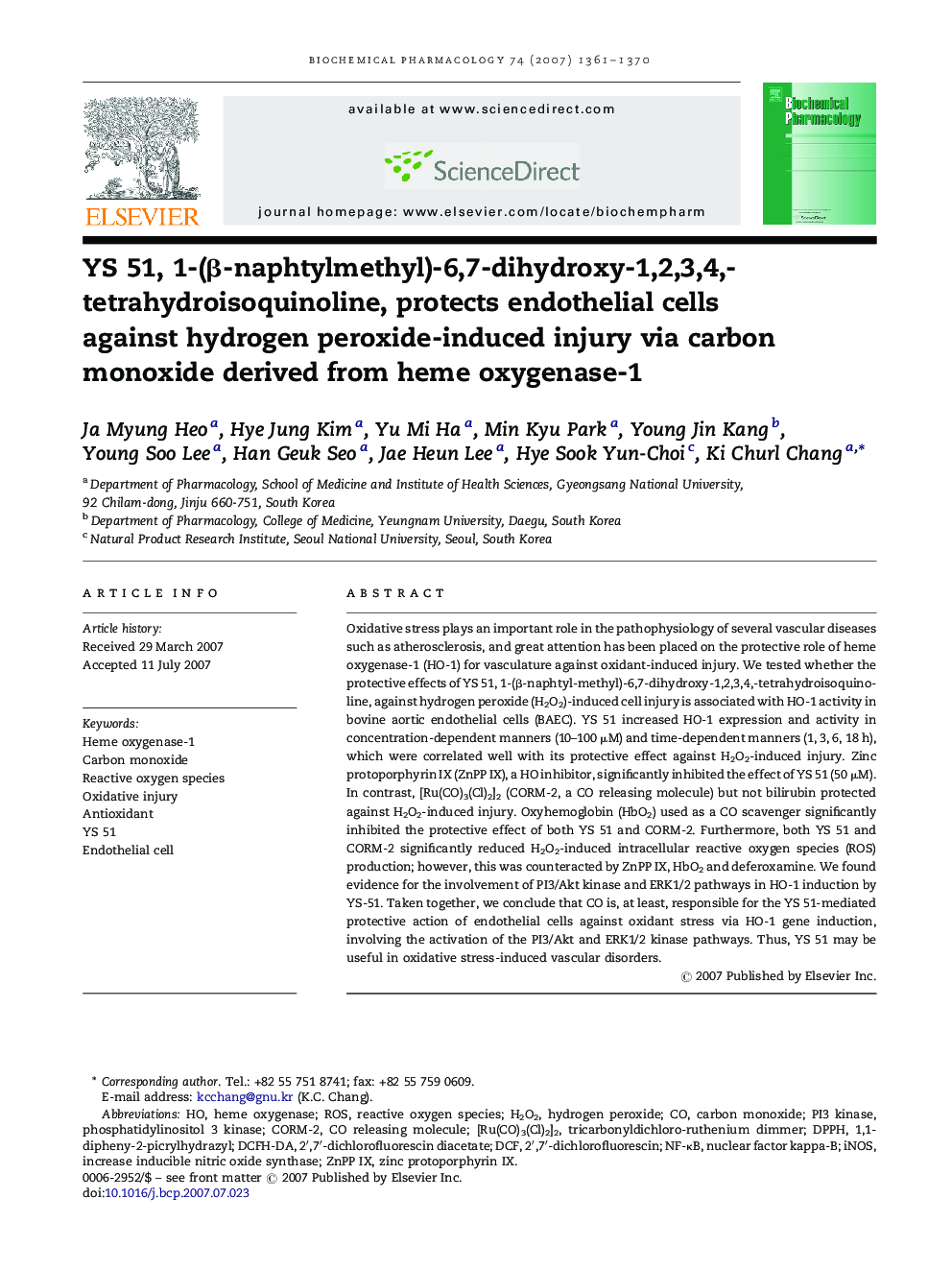| Article ID | Journal | Published Year | Pages | File Type |
|---|---|---|---|---|
| 2514588 | Biochemical Pharmacology | 2007 | 10 Pages |
Oxidative stress plays an important role in the pathophysiology of several vascular diseases such as atherosclerosis, and great attention has been placed on the protective role of heme oxygenase-1 (HO-1) for vasculature against oxidant-induced injury. We tested whether the protective effects of YS 51, 1-(β-naphtyl-methyl)-6,7-dihydroxy-1,2,3,4,-tetrahydroisoquinoline, against hydrogen peroxide (H2O2)-induced cell injury is associated with HO-1 activity in bovine aortic endothelial cells (BAEC). YS 51 increased HO-1 expression and activity in concentration-dependent manners (10–100 μM) and time-dependent manners (1, 3, 6, 18 h), which were correlated well with its protective effect against H2O2-induced injury. Zinc protoporphyrin IX (ZnPP IX), a HO inhibitor, significantly inhibited the effect of YS 51 (50 μM). In contrast, [Ru(CO)3(Cl)2]2 (CORM-2, a CO releasing molecule) but not bilirubin protected against H2O2-induced injury. Oxyhemoglobin (HbO2) used as a CO scavenger significantly inhibited the protective effect of both YS 51 and CORM-2. Furthermore, both YS 51 and CORM-2 significantly reduced H2O2-induced intracellular reactive oxygen species (ROS) production; however, this was counteracted by ZnPP IX, HbO2 and deferoxamine. We found evidence for the involvement of PI3/Akt kinase and ERK1/2 pathways in HO-1 induction by YS-51. Taken together, we conclude that CO is, at least, responsible for the YS 51-mediated protective action of endothelial cells against oxidant stress via HO-1 gene induction, involving the activation of the PI3/Akt and ERK1/2 kinase pathways. Thus, YS 51 may be useful in oxidative stress-induced vascular disorders.
